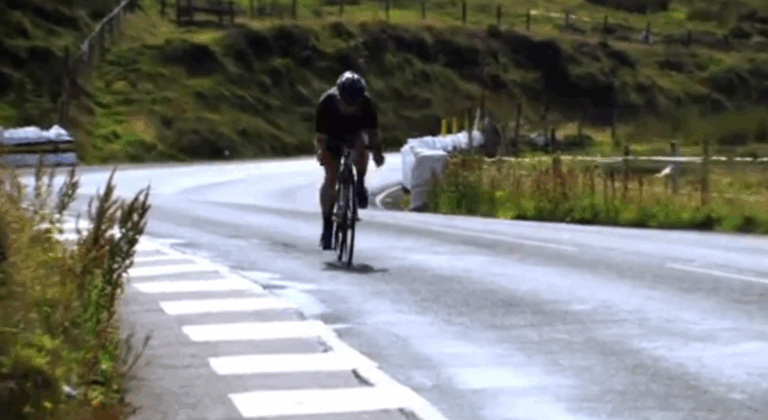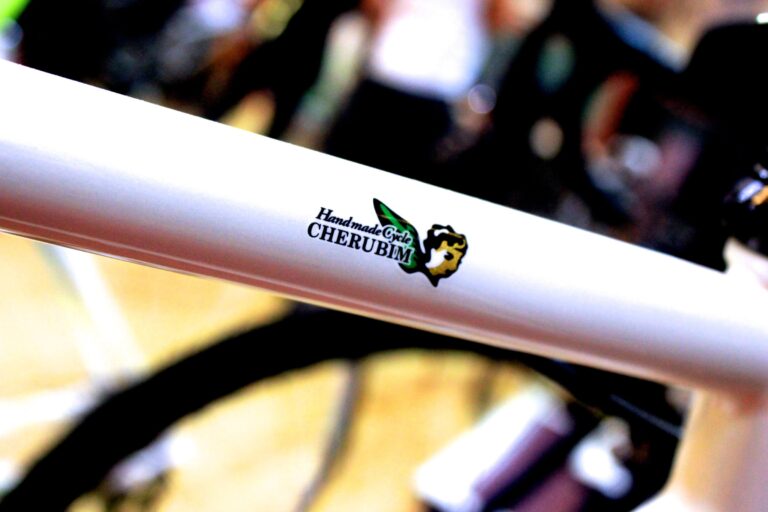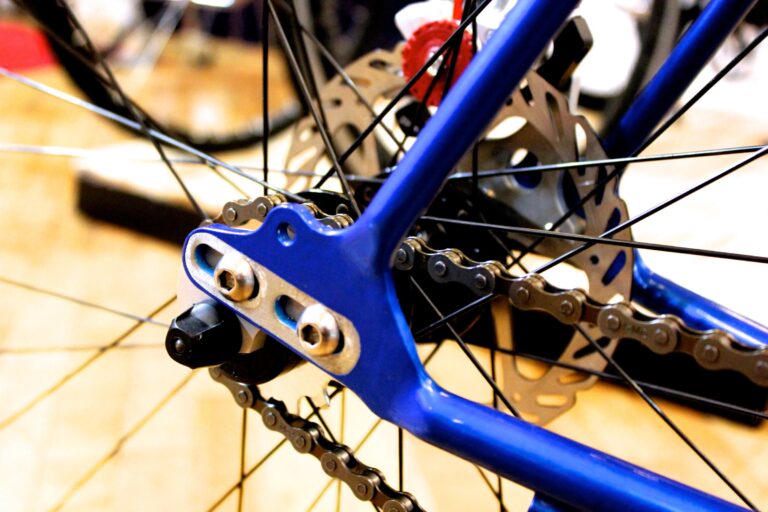Felt have overhauled the AR aero road frame, which they say is now lighter, stiffer, more comfortable and, of course, more aerodynamic, than the outgoing version.
The frame is a significant departure from the existing AR, unveiled in 2008, and its aero characteristics are obvious to the eye, with a sleek hourglass headtube, narrow frontal area, CFD-inspired tube profiles and a rear brake which has been moved from the seatstays to behind the bottom bracket.

The fork also borrows technology from Felt’s DA time trial bike. The twin tail design is said to smooth airflow and improve aerodynamic performance between the fork and the downtube.
That results in a frame which is 28 per cent faster than the existing AR in the wind tunnel, according to Felt, but the company’s director of research and development, Jeff Soucek, told RoadCyclingUK the design process has also placed equal focus on weight, stiffness and comfort.
“Our goal on this bike was not to just design a good aero road frame but to design a good road frame full stop,” said Soucek.
“We have a lot of history of aerodynamics and wind tunnel development so pretty much had that covered, so our goal with the new bike was not to just make the bike faster aerodynamically but to make the stiffness, weight and comfort comparable with a regular road frame.”
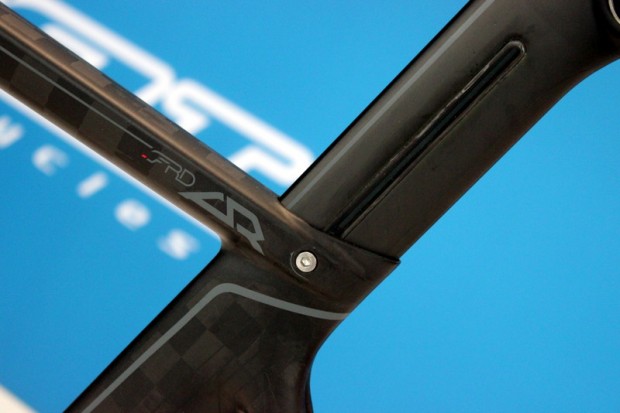
The introduction of a new seatpost, designed to improve comfort, is the most interesting development on the new AR.
“A lot of aerodynamic frames lose their vertical compliance because they have such large tubes,” said Soucek. “We have refined the carbon layup to build comfort back into the frame, but we also have a new seatpost design.”
Most seatposts use a clamping mechanism which essentially crushes the seatpost, and so a thicker carbon wall is required, Felt’s patented design enables them to use a thinner seatpost wall, thereby improving vibration dampening.
The ‘inside out clamping mechanism’ has two internal aluminium threaded inserts, in the shape of the seatpost, tighten by a bolt on either side of the seatpost. The bolts pull the wedges out and compress them against the carbon, securing the seatpost. The design has allowed Felt to use an aero-profiled seatpost with walls than are very thin and flexible, while the clamp itself is also said to be more aerodynamic. A vertical slot on either side of the seatpost allows it to be adjusted for height and dust strips are then fitted to keep dirt out. The design, Soucek says, means the AR is between the race-ready F-Series and comfort-orientated Z-Series in terms of vertical compliance.
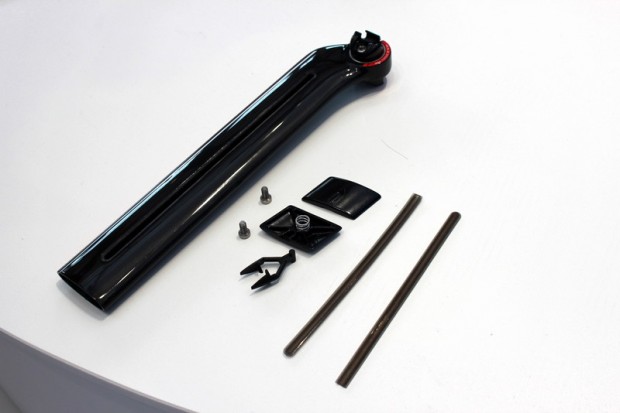
The design does, of course, limit the rider to Felt’s seatpost. Two versions will be available, the standard post described above and an upgrade which also has elastomer inserts from 3T bonded into the seatpost to improve comfort further. The seatpost can also be flipped to place the rider further forward, as is often preferred in time trials.
Bike manufacturers like to quantify the improvement of a new bike over an existing model and as well as being 28 per cent more aero than the old AR, this version – which is effectively a new frame, rather than an update – is said to be 30 per cent stiffer and 18 per cent lighter.
As a result, claimed frame weight for the top-of-the-range AR FRD (Felt Racing Division) is 900g, which is impressive for an aero road frame, while there will also be more affordable versions of the frame (and, subsequently, more affordable complete bikes) which weigh a claimed 1,000g and 1,100g respectively
“That brings the AR down to lightweight road bike weight,” said Soucek. “The carbon layup and construction method changes as you move down the range. For example, the FRD frame uses Textreme, which is essentially individually woven fibres, rather than unidirectional carbon fibre sheets, which saves weight and creates a stronger structure.”
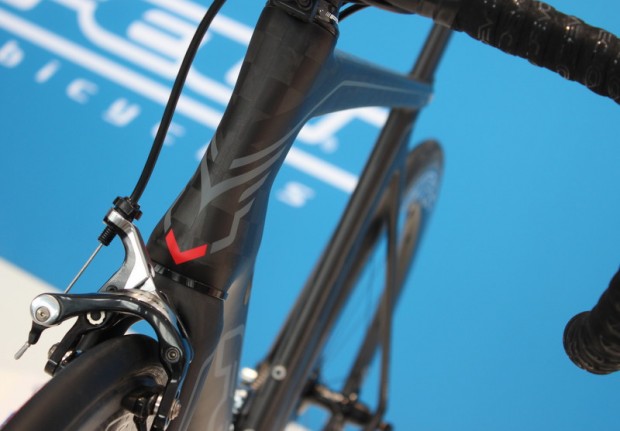
Felt expect the frame to be used by some Argos-Shimano riders next season and the geometry designed to suit the needs of both WorldTour racers and consumers. As a result, most of the AR’s key measurements and angles are the same as the F-Series, though approximately 20mm has been added to the headtube.
“Most people, unless you’re a racer, like the headtube a little taller, so they run a lot of spacers, but that compromises the aerodynamics,” said Soucek, who said the AR “still has an aggressive geometry.”
“If you run a negative 17 degree stem, you can still find the same position as you’d have with a flat stem on an F-Series bike,” he added.
UK specs and prices for the model year 2014 Felt AR are to be confirmed.
Website: Felt
UK distributor: Saddleback


